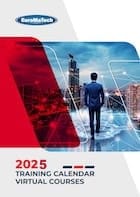How to Build a Customer-Centric Business Model
Customer experience has become the key differentiator between successful businesses and those struggling to stay relevant. At the heart of this shift lies the concept of a customer-centric business model—a strategic approach that places customer needs, expectations, and satisfaction at the core of every business decision.
A customer-centric business doesn’t just deliver products—it builds relationships. It anticipates desires, solves pain points, and creates value that resonates beyond transactions. This article explores how organizations can design and implement a truly customer-centric business model that drives loyalty, revenue, and long-term growth.
What is a Customer-Centric Business Model?
A customer-centric business model is an operating framework that prioritizes the customer in every aspect of business—from product development and marketing to sales, service, and organizational culture.
Rather than focusing purely on internal efficiencies or short-term revenue, customer-centric companies ask:
- What do our customers truly want?
- How can we exceed their expectations?
- What long-term value can we deliver?
To explore foundational principles, visit EuroMaTech’s Customer Centricity Skill Courses, which offers insights and training for embedding customer-focused strategies into leadership and operations.
Why Customer-Centricity is a Competitive Advantage
Organizations that adopt customer-centric models experience:
- Higher customer satisfaction and retention
- Increased referrals and brand advocacy
- Stronger differentiation in crowded markets
- Higher employee engagement and service quality
According to research, companies with high customer-centricity outperform their competitors in revenue growth by over 60%. The model shifts businesses from transactional relationships to emotional loyalty—where customers return not just for products, but for the experience and value.
Explore our Customer Service Management Training Courses to develop the systems, culture, and skills needed for a service-driven organization.
Core Elements of a Customer-Centric Business Model
1. Deep Customer Understanding
At the foundation of any customer-centric approach is insight. This involves going beyond basic demographics to understand:
- Customer goals and pain points
- Purchase motivations and behaviors
- Preferred communication and support channels
How to achieve this:
- Conduct voice-of-customer surveys and feedback loops
- Analyze behavior across digital platforms
- Use customer journey mapping to identify touchpoints
Training like Customer Management Specialist: Managing Service Quality and Customer Satisfaction Course offers practical tools to translate data into actionable customer experience strategies.
2. Cross-Functional Collaboration
Customer-centricity is not the job of one department—it’s a shared responsibility. From sales and support to finance and logistics, every function must align to deliver value consistently.
Key strategies:
- Break down organizational silos
- Use customer experience metrics across departments
- Incentivize collaborative KPIs
This shift creates internal alignment around a unified mission: serving the customer.
3. Empowered Frontline Teams
The people who interact directly with customers often define the brand experience. Organizations must empower their teams with training, autonomy, and tools to act in the customer’s best interest.
Best practices include:
- Training in empathy, communication, and conflict resolution
- Giving teams authority to resolve issues without escalation
- Recognizing and rewarding customer-focused behaviors
Courses like Customer Service Excellence equip professionals with world-class service skills to build trust and loyalty at every touchpoint.
4. Customer-Centric Culture
A customer-centric business model is not just a strategy—it’s a mindset embedded in the culture. Every employee, regardless of role, should understand how their actions affect the customer experience.
To create this culture:
- Lead by example at the executive level
- Share customer success stories internally
- Align hiring, onboarding, and performance reviews with customer values
For companies looking to transform their culture, Building a Customer-Centric Service Culture Course provides a structured path to align values, behaviors, and leadership with customer-first thinking.
5. Seamless, Personalized Experiences
Today’s customers expect seamless interactions across all channels. A customer-centric business leverages technology and data to offer:
- Omnichannel support
- Real-time personalization
- Proactive service and communication
This creates a cohesive experience, whether the customer is browsing a website, speaking to a service agent, or receiving post-purchase support.
Training like Customer Service Professional Course ensures your team can deliver consistent excellence across platforms and customer journeys.
Steps to Build a Customer-Centric Business Model
Step 1: Conduct a CX Audit
Evaluate your current customer experience touchpoints. Look for:
- Pain points or inconsistencies
- Bottlenecks in service delivery
- Gaps between brand promise and experience
Use feedback, NPS scores, and social media insights to gather real data.
Step 2: Develop Customer Personas and Journey Maps
Create detailed personas representing different customer segments. Map their experiences across:
- Awareness
- Consideration
- Purchase
- Onboarding
- Retention and advocacy
This helps identify moments of truth where value can be added or lost.
Step 3: Align Internal Processes with Customer Needs
Assess whether internal systems, incentives, and workflows support customer success. Examples:
- Are service reps empowered to solve problems?
- Do policies support convenience and satisfaction?
- Is the voice of the customer integrated into product development?
Realign processes where necessary to support customer-centric outcomes.
Step 4: Train and Develop Employees
Customer-centricity thrives when employees are well-equipped and confident. Invest in:
- Service excellence training
- Emotional intelligence and communication skills
- Customer journey awareness
EuroMaTech offers a range of tailored courses, such as:
- Customer Service Professional Course
- Customer Service Excellence Course
- Building a Customer-Centric Service Culture Course
Step 5: Measure What Matters
Traditional KPIs like revenue and efficiency must be complemented with customer-centric metrics, such as:
- Net Promoter Score (NPS)
- Customer Effort Score (CES)
- First Contact Resolution (FCR)
- Churn and retention rates
Linking these metrics to departmental goals helps reinforce the importance of customer experience.
From Product-Focused to Customer-First
A financial services firm realized that its customer satisfaction was declining despite technological investments. After conducting a service audit, they found:
- Inconsistent service across departments
- Overreliance on self-service channels
- Little feedback integration into service design
The company:
- Adopted customer journey mapping
- Invested in frontline training
- Aligned leadership KPIs with customer satisfaction
The result? A 25% increase in NPS and significant growth in client referrals—demonstrating how a customer-centric approach drives both reputation and revenue.
Challenges to Watch For
Transitioning to a customer-centric model can be challenging. Common obstacles include:
- Resistance to change from product- or sales-driven cultures
- Misalignment between executive vision and frontline practices
- Underinvestment in employee development
Success depends on leadership commitment, clear communication, and a long-term view.
Start with the Customer, Succeed with Loyalty
A customer-centric business model isn’t just a tactic—it’s a long-term strategy for sustainable success. It requires listening deeply, responding empathetically, and aligning your operations, culture, and metrics with what truly matters to your customers.
By embracing customer-centricity, your business doesn’t just deliver services—it creates experiences, builds trust, and earns loyalty that drives growth.
Ready to transform your business from the inside out? Explore EuroMaTech’s expert-led training to equip your teams for success:
- Customer Centricity Skills Courses
- Customer Service Management Courses
- Building a Customer-Centric Service Culture Course
- Customer Service Professional Course
- Customer Service Excellence Course
- Customer Management Specialist Course






